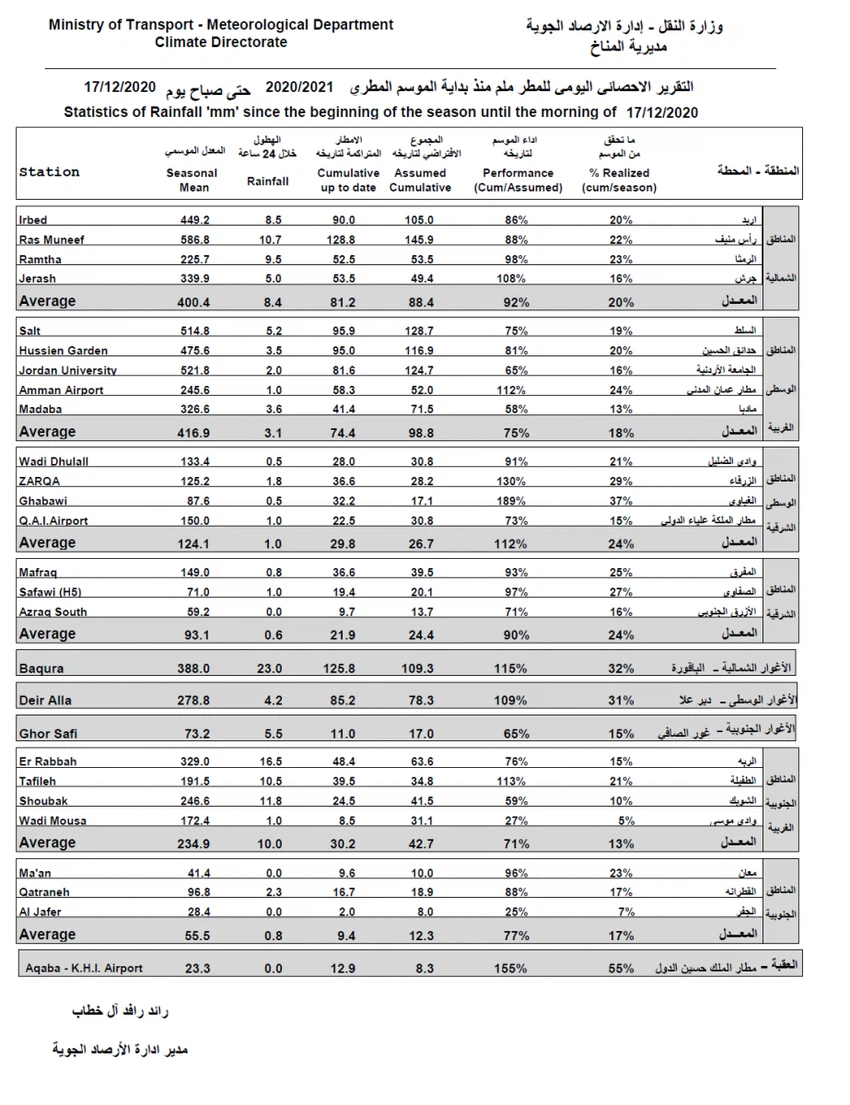According to the Jordanian Meteorological Department: 23 mm is the highest rainfall recorded in the last 24 hours and was recorded in Baqoura
ArabiaWeather - The Kingdom is still under the influence of the second-class depression, according to the Arab Weather classification for the severity of depressions
Following are the amounts of recorded rain, according to the Jordan Meteorological Department, during the last 24 hours:
It is worth noting that some quantities

As the report states, the highest amount of rain was recorded during the last 24 hours in the northern Jordan Valley - Baqoura, reaching 23 mm, followed by Rabah - the south of the Kingdom, with 16.5 mm precipitation.
As for the northern regions of the Kingdom, the average precipitation was 8.4 mm, the western central regions recorded 3.1 mm, while the central eastern regions recorded 1 mm as the average precipitation.
The southern regions of the Kingdom also received rainfall, as the southwestern regions recorded an average of 10 mm
Arabia Weather App
Download the app to receive weather notifications and more..



